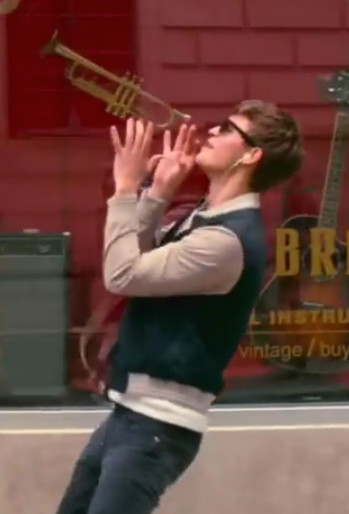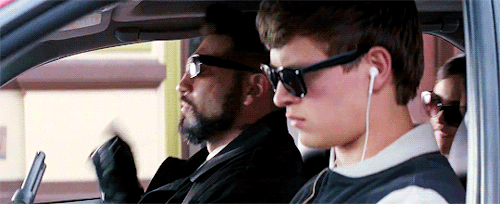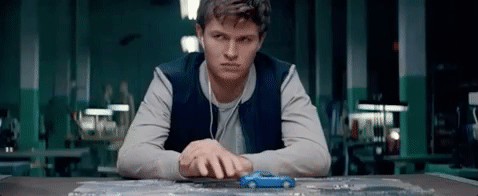FYC: Best Editing, Baby Driver
 Tuesday, January 9, 2018 at 12:30PM
Tuesday, January 9, 2018 at 12:30PM by Tim Brayton

If you know one thing about Baby Driver, surely it's that the film was conceived from the ground up to move in perfect time to music. Every aspect of the film that could be tied to the rhythm of the soundtrack was: the movement of the camera, the blocking of the actors, and the cutting between shots.
Perhaps that sounds like an impressive trick. But "impressive" hardly starts to cover it: love the film or not (I was a little cool on it, overall), Baby Driver is indisputably one of 2017's most audacious piece of film craftsmanship, a high-wire act of choreographing every element of the film production process into one steady flow. And by no means the least of this craft came in the form of the editing done by Paul Machliss and Jonathan Amos.
The editors' work on this film began unnaturally early...

Ordinarily, editors receive footage after production has wrapped, or sometimes are given the dailies to start assembling during production. In this case, the film's editing rhythm was already roughed out before the shoot began. As Machliss explained to the Hollywood Reporter shortly before the new year, the film's essential structure – all those songs – had to be set in advance for clearance purposes, and animatics (essentially, minimally-animated still images) were roughed in to give the entire film its shape right from the onset.
The editors were also invited to be on set, bringing with them a portable editing suite, so that the footage could be married to the music immediately after having been shot, and so that the editors could collaborate with director Edgar Wright and cinematographer Bill Pope to determine the proper content and length of shots. If you're not familiar with the standard workflow of film production and post-production, it's hard to appreciate what a drastic change from any norm the Baby Driver production represents. Speaking as a sometime editor myself, the opportunity and responsibility facing Machliss and Amos leaves me dumbfounded. The execution leaves me awestruck; it's flawlessly edited, down to the finest details of actors' gestures motivating specific cuts.
As much as any film I can name since the montage experiments in the Soviet Union in the 1920s, Baby Driver is a movie conceived around its editing. It's not, therefore, "surprising" that the final results are so tightly-controlled, that the film's pace is so consistent and refined, that the camerawork and editing are so effectively bound together. But that lack of surprise is entirely reflective of the work and thoughtfulness that the filmmakers put into this before one single actor stepped in front of one single camera. Just because the film was substantially cut before production instead of after production doesn't take away one jot from Machliss and Amos's ingenuous, insightful work, and this is, to my eyes, easily the most accomplished, effective work of editing that's anywhere near the Oscar conversation this year.

Other Crafts Honored
Best Production Design 2017 | The Beguiled's Costume Design | Killing of a Sacred Deer Cinematography
 Baby Driver,
Baby Driver,  Edgar Wright,
Edgar Wright,  FYC,
FYC,  Oscars (17),
Oscars (17),  Sound,
Sound,  Soundtrack,
Soundtrack,  editing
editing 


Reader Comments (2)
Loved the film and hope it gets this nod.
Yes, agreed a lot.